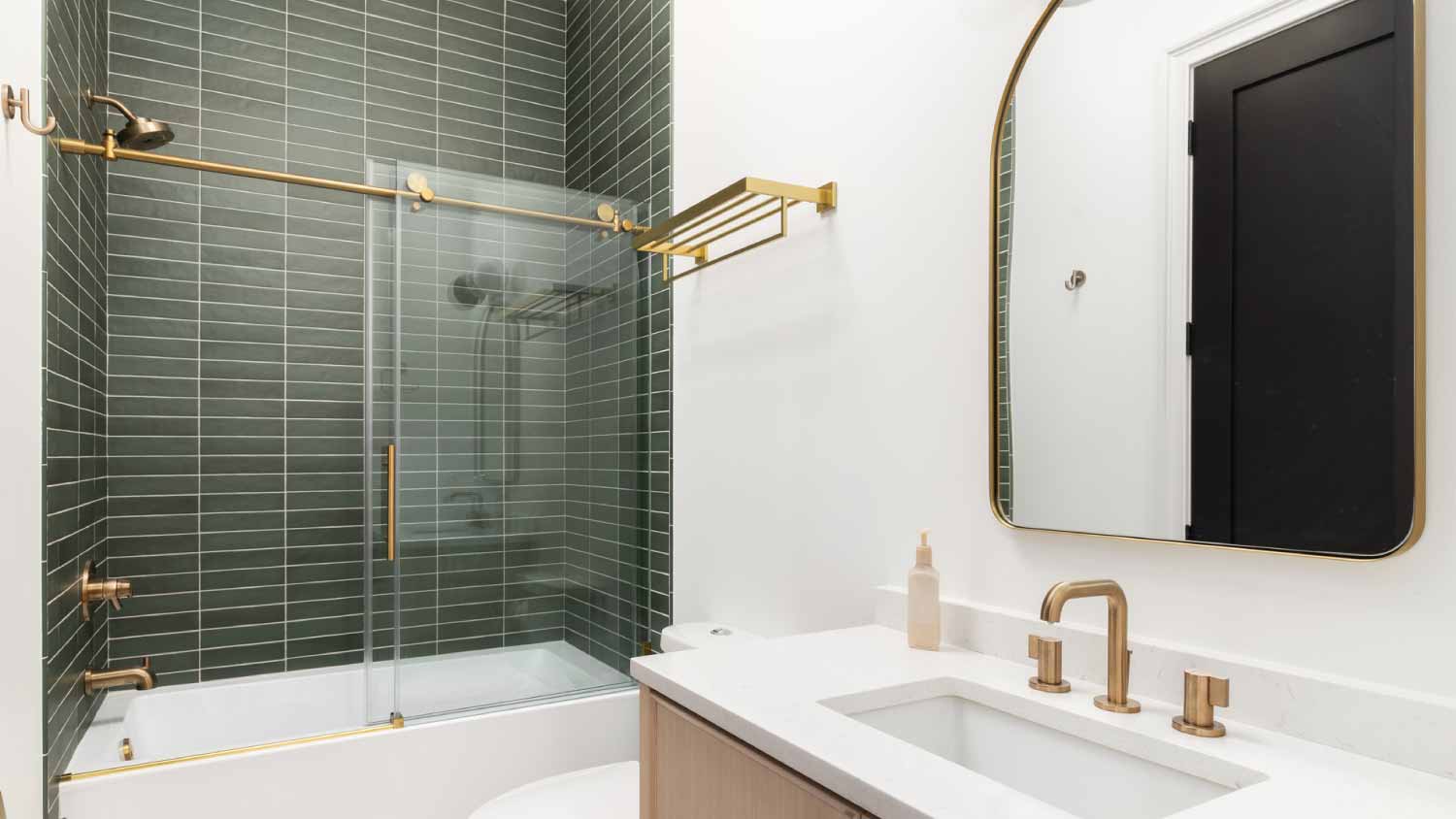
Remodeling your bathroom can add significant value to your home. Your bathroom remodel cost in Columbus, OH will depend on size, fixtures, materials, labor, and other factors.
Drop in and relax


Drop-in tubs offer room for customization, including tub size, shape, and the type of surround it sits in.
Freestanding tubs don’t require additional finishing like drop-in tubs do.
Drop-in tubs differ from alcove tubs, which require less finishing, but they can be installed in the same space.
You might be able to install a drop-in tub yourself, but in most cases, you should call a bathtub installer.
If you love the look of a customized bathroom, a drop-in tub could be the key to making your vision a reality. Drop-in tubs have unfinished sides, allowing you to build a custom surround around it—think of a unique look with tile or stone. However, these tubs take more work to install than other types. This guide explains what you need to know about drop-in tubs and how they differ from other options for your bathroom remodel.
A drop-in tub has a built-in ledge around the edges with no finished sides. This allows you to “drop” the tub into a customized enclosure, like a drop-in sink. This enclosure consists of a wood frame finished with tile or stone to create a unique look for your bathroom. Alternatively, you can place a drop-in tub and its support structure in an alcove and finish the exposed side.
Drop-in tubs are available in various bathtub materials like fiberglass and acrylic, come in a range of shapes and sizes, and the surround is customized for your bathroom. This flexibility allows you to create unique bathroom designs with the freedom to choose the surrounding materials.
Remember that you’ll need to budget for more materials and labor to install a drop-in bathtub with a custom surround. You can hire a local bathtub installation pro to build the tub enclosure and ensure it’s installed correctly.
Freestanding bathtubs are exactly what they sound like—bathtubs that stand on their own with no surrounding support structure. A classic freestanding bathtub is a claw-foot tub. Unlike a drop-in tub, there’s no additional work needed to construct an enclosure or finish the sides of a freestanding tub. A drop-in tub requires a frame, and then it’s “dropped in,” and the ledge around the edge of the tub rests on the structure to hold the tub in place.

An alcove tub is standard in most bathrooms and is surrounded on three sides by the bathroom walls. In some designs, one or more surrounding walls are pony walls—also known as partial walls, half walls, or short walls—or cabinets. Alcove tubs are finished on the exposed side, so they’re easy to install and don’t require much custom work to complete the project.
Drop-in tubs offer more versatility than alcove tubs because they come unfinished on the sides, and the enclosure in which they are housed is custom-built. The high level of customization that comes with a drop-in tub makes it ideal for homeowners who want a unique bathroom design. On the other hand, if you want a wallet-friendly tub that can be installed quickly, an alcove tub is a better option for your bathroom.
From average costs to expert advice, get all the answers you need to get your job done.

Remodeling your bathroom can add significant value to your home. Your bathroom remodel cost in Columbus, OH will depend on size, fixtures, materials, labor, and other factors.

Here's a look at the cost to build a garage with an apartment on your property for a rental or in-law apartment.

For a bathroom remodel, touch-up, or home perimeter, caulking is worth the investment. Find out average costs for window caulking, shower caulking, and more.

From farmhouse to double basin, kitchen sinks can vary by installation method and bowl configurations. Pick which type of kitchen sink is best for your home in the guide below.

Make choosing your toilet seat a cinch using this guide. Learn about different toilet seat types, shapes, materials, and features.

Small bathroom remodel costs depend on a number of factors—like what exactly you’re upgrading and the size of the room. This guide will help you budget.